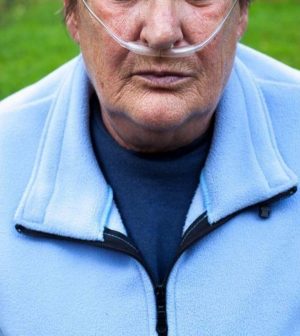- Skip Storing This Everyday Product in the Fridge Door
- Green Tea + B3 Pairing May Boost Brain Health
- Navigating Your Midlife Crisis: Embracing New Possibilities
- City Raccoons Showing Signs of Domestication
- Mapping the Exposome: Science Broadens Focus to Environmental Disease Triggers
- One Week Less on Social Media Linked to Better Mental Health
- Your Brain Changes in Stages as You Age, Study Finds
- Some Suicide Victims Show No Typical Warning Signs, Study Finds
- ByHeart Formula Faces Lawsuits After Babies Sickened With Botulism
- Switch to Vegan Diet Could Cut Your Greenhouse Gas Emissions in Half
Early Responders to 9/11 Now Face Higher Odds for COPD

Twenty years after the 9/11 attacks on the World Trade Center, researchers report that early recovery workers and volunteers have a high risk for chronic obstructive pulmonary disease (COPD).
A study of nearly 18,000 workers and volunteers found that those who arrived soon after the Twin Towers collapsed in 2001 face the greatest risk of COPD.
“We know that emergency workers who arrived in the aftermath of the World Trade Center disaster face higher risks of airway diseases, such as asthma, chronic non-specific bronchitis and bronchiolitis, probably caused by the smoke and toxic dust that persisted in the air days and weeks after the attacks,” said researcher and pulmonologist Dr. Rafael de la Hoz, from the Icahn School of Medicine at Mount Sinai in New York City.
“It’s important that we continue to monitor these workers to understand the long-term impacts of their exposure while working on the site because some conditions can take many years to develop,” de la Hoz said in a news release from the European Respiratory Society.
A chronic lung condition, COPD causes breathing difficulties, coughing and wheezing. It mainly affects older smokers, but occupational and environmental exposures are increasingly recognized as risk factors.
For this study, each of the workers had at least two lung function tests between 2002 and 2018. The researchers compared these data with each worker’s arrival time at the World Trade Center. They also took into account other factors, such as age, smoking and weight.
They found that those who arrived in the first day or two, when smoke and dust levels were high, were more likely to have poorer lung function. In all, 3.3% of the workers developed COPD, with those who arrived early to the site having a 30% higher risk than those who came later.
About one-quarter of the people with COPD never smoked. The researchers also found that those with COPD often had an earlier diagnosis of asthma and about 40% of those with COPD had both diseases, known as asthma-COPD.
Many of these workers were in their early 40s in 2001, and COPD is rare in that age group, de la Hoz noted.
“Twenty years on from their work at the World Trade Center site, and despite decreasing rates of smoking, we are starting to see cases of COPD emerge. Our study shows that those facing the greatest risk are those who worked on the site in the first day or two after the towers collapsed and in those who had previously been diagnosed with asthma,” de la Hoz said.
Besides his research work, de la Hoz said he has been diagnosing and treating these workers’ airway disorders since 2002, using a variety of methods. “We would like to think that this work may have prevented worse COPD morbidity,” he added.
The findings were presented recently at the virtual annual meeting of the European Respiratory Society. Findings presented at medical meetings are considered preliminary until published in a peer-reviewed journal.
More information
For more on COPD, see the U.S. Centers for Disease Control and Prevention.
SOURCE: European Respiratory Society, news release, Sept. 6, 2021
Source: HealthDay
Copyright © 2025 HealthDay. All rights reserved.










